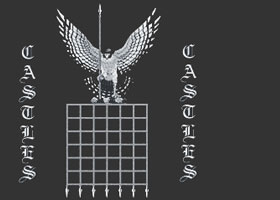| | Roman Architecture - The Roman Empire
The period of Roman Architecture dates from the establishment of the Roman Republic in 509BC to the transfer of the capital of the Roman Empire from Rome to Constantinople in 330AD. This date is subject to debate as the fall of the Roman Empire was in 476 AD when the last Roman Emperor, Romulus Augustulus, was defeated by Odoacer, a German Goth. However, Roman styles of architecture continued, however, for centuries after these dates, often in Christian guise. Elements of Roman architecture moved on to the period of Christianity - the Dark Ages and then the Middles ages, or Medieval period. The Roman period marks the transition from a western world which comprised of barbaric regional tribes to the sophistication and civilisation of the the global conquerors of the Roman Empire. The Romans were strongly influenced by Greek architecture. | | | |
| | Roman Architecture - Facts and Info about Roman Architecture
- Social and cultural change?
- Changing needs of the population
- The Skills available? The Workforce?
- What materials were readily available?
- The Design, Layout of Roman Architecture
|
Roman ArchitectureThe History of Roman Architecture
The History of Roman Architecture was divided into two distinctive eras. The first era was of the Roman Republic where the origins of Roman architecture can be traced to the Etruscans, who migrated from Asia Minor to Italy in the 12th Century BC. The Etruscans mirrored the Greek and the Phoenician traditions building large temples to honour their Gods. The second era started in 27BC and is classed as the period of the Roman Empire. The Roman Empire covered thousands of miles across Europe, North Africa and the Near East. The Roman Empire built approximately 51,000 miles of paved highways across their Empire! The number of countries the Romans conquered afforded a vast number of culturally diverse people. The architecture of the Roman Empire therefore became eclectic i.e. made up of, or combining elements from. a variety of regional sources and styles. Roman Architecture in England
The Roman occupation of England lasted for nearly 500 years. Roman architecture and buildings left their mark on England. Architecture is defined as the 'art and science of designing and erecting buildings' - the Romans were masters of Architecture - designing and erecting buildings! The Romans were great castle and fortress builders - the purpose of these constructions were as fortified bases. These fortified bases were built as defences - wooden Stockades were erected, surrounded by ditches, wherever they camped - Roman Architecture at its most effective. How did they achieve this? Manpower and pre-fabricated forts! The art and science of Roman Architecture resulted in the building of fortresses, villas, temples, towns, baths, great walls and Roman roads - changing the face of Britain forever. Structures developed during the period of Roman Architecture
The era of Roman Architecture moving from the Roman Republic to the Roman Empire saw the development and construction of new structures and buildings. Roman Architecture was responsible for the development of: |
Roman Architecture - Time
Time is an important factor in Roman architecture: - Social and cultural change?
- The grandeur of Roman Architecture reflected the social changes of people - the Romans were the conquerors of half the civilised world. Their stone and marble structures declared their dominance and power to all of the civilisations that were enslaved
- The building of the Roman Roads provided the means for faster travel
- The Roman Amphitheatres were built for the mob - the games provided entertainment whilst pronouncing the power and the extent of Roman dominance exemplified by the brutal sacrifice of men and of exotic creatures such as crocodiles, lions and tigers
- Changing needs of the population?
- The Roman Emperors required the support of the mob to stay in power. Great public building projects were undertaken. The population was treated to games (in the massive amphitheatres) and spectacular triumphal processions (across the Roman roads and through the Triumphal arches)
- The Roman patricians wanted luxury - their magnificent villas, temples, cities and their public baths
- What materials were readily available for Roman Architecture?
- Stone, marble
- Magnificent Roman architecture was made possible by their development of concrete
- Were the materials easily accessible?
- Marble was initially important but eventually quarried in Italy
- The Skills available? The Workforce?
- Many skills were required. To build the great structures and cities would have taken a labour force of thousands - not a problem for the Romans who had enslaved millions
The answers to these basic questions relating to Roman architecture provide a historical doorway into past cultures and eras. Examples of Ancient Roman Architecture in Britain
There are many examples of ancient Roman architecture - walls, roads, villas and forts in England and Wales. The links at the top of the page provides access to details of Roman Architecture and the sites and locations of Ancient Roman Architecture in England and Wales. Architecture in England
The different styles of architecture in Britain provide a historical doorway into past cultures and eras and provide an insight into the development of the Medieval Castles of England and Wales. Castle Architecture
Neolithic Architecture
Iron and Bronze Age Architecture
Romanesque Architecture & the Norman Architects
Gothic Architecture
Medieval Castle Architecture |
|
|

